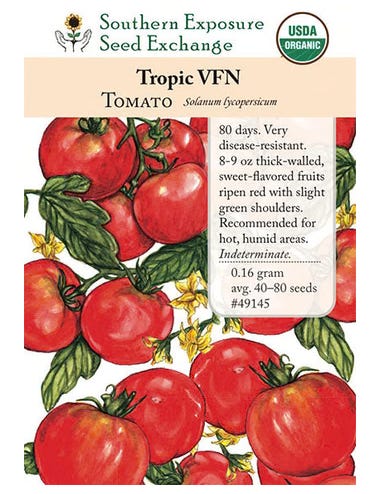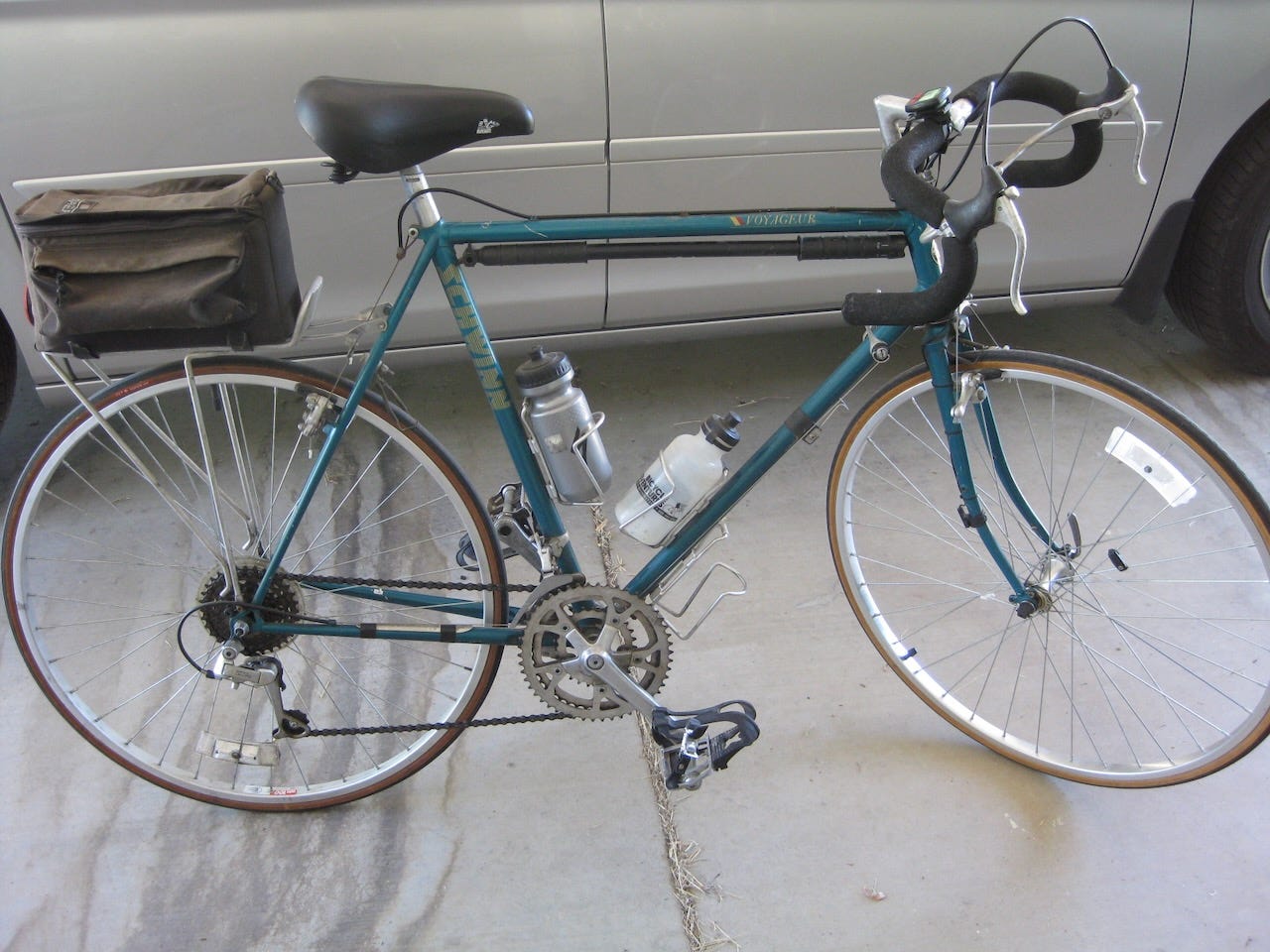Can You Plant a Fruit Tree in the Pulp Pot It Came In? Can You Grow a Fruit Tree in a Container?
The answer to both: It Depends. Plus: Controlling Fusarium wilt, Aphids in Trees, and more.
Before we delve into the mysterious world of those pulp pots that fruit trees are sold in this time of year, as well as the tricky world of planting fruit trees in any container, here’s what’s been happening this past week on the Garden Basics with Farmer Fred podcast.
Episode 312: Q&A Can You Stop Fusarium Wilt in Your Raised Beds with a Solid Barrier?
Podcast listener Linda asks, “We have Fusarium Wilt in our garden. We're putting in raised beds in April. What kind of barrier should go in at the bottom of the beds to prevent the wilt getting into the raised beds?”
Good question, Linda. However, that cure - using a barrier beneath a raised bed - may cause more problems that it would solve. Our guest on that episode, Sacramento County (CA) Master Gardener Gail Pothour explains: “I don't think I would put any kind of barrier, whether it's black plastic, landscape fabric, whatever, I wouldn't put anything on the bottom.”
Correct. Any sort of solid surface beneath a raised bed could impede the flow of water from your raised bed. And you could end up with wetter soil, which could actually spread fusarium.
Fusarium is a very host-specific fungal disease that will kill the plant. Usually, it starts out with yellowing leaves, perhaps on one side of the plant, but eventually kills the plant. Fusarium spreads via soil borne-spores, which can take over an entire garden thanks to inattentive gardeners moving soil around with their dirty tools, and their muddy shoes.
“Get rid of the dying plants”, explains Pothour. “Don't put it in your home compost, take out the roots and everything and throw it in the garbage. Because your home compost bin probably won't get hot enough to kill the pathogen. So yeah, just get rid of it. Because the fruit on the plant will be compromised. It doesn't have so much leaf cover. So it will get sunburned. And so the fruit itself will start looking bad. The state lab assures me that you could eat it, if as long as it’s not moldy or anything like that. I'm not sure I'd want to, because the fruit will look pretty bad because it's wilting, and it's not getting the nutrients that it needs. So, I just pull it up and get rid of it.”
However, there is hope. There are several strategies for controlling the spread of fusarium that we talk about in Episode 312, including building tall raised beds, at least 18 inches tall, recommends Pothour, who has to contend with fusarium wilt in the soil at the Fair Oaks Horticulture Center. Other easy controls include choosing fusarium wilt-resistant cultivars of tomatoes, peppers, and eggplant. Look for the letter “F” after a variety’s name.
Planting in containers with new, pathogen-free soil mix is also one solution to getting around growing your favorite variety that might be susceptible to fusarium wilt.
Fusarium wilt can strike a number of common garden plants. The somewhat reassuring news: as mentioned earlier, fusarium wilt is very host-specific and will only decimate a certain species, leaving the gardener the opportunity to plant other crops in that same area. Check out this chart, from the Journal of Pesticide Science:
According to Pothour: “The state lab had told us that this particular strain - Fusarium oxysporum lycopersici - its only host is tomatoes… They had assured us that the potatoes we wanted to plant the next year in that bed should not get it; and they didn’t, as it turns out. And so my understanding, and I'm not a scientist, but that each of the oxysporum species, I guess you would call it (the proper term is “isolates”), are host specific so the fusarium that gets on basil only gets on basil, or that gets on muskmelons only gets on muskmelons. And on okra, only gets on okra. So it thankfully, is host specific, unlike verticillium wilt, which gets on almost everything. So that's one of the management techniques. If you know you have it in this particular area, and it's the one that gets on tomatoes, don't plant heirloom tomatoes. Only plant tomatoes that are resistant; or. plant something else there.”
Listen to Episode 312 for more tips on controlling Fusarium, including how to identify it. The show notes for that episode also have links for more information about Fusarium Wilt control techniques from the University of California, University of Minnesota, and the Missouri Botanical Garden.
Episode 313: Which are Better - Hybrids or Heirlooms? Aphid Control in Trees
Debbie Flower, America’s Favorite Retired College Horticulture Professor, joins us in Episode 313 to define and discuss the pros and cons of growing hybrid varieties of garden vegetables and flowers versus the heirloom versions. Probably the biggest advantage of growing an heirloom garden: the great taste and fantastic beauty. Their downfall: heirlooms have no disease resistance, and may perform better in some other climates or USDA zones. Hybrids have the advantage of productivity, disease resistance and ease of growing. On the negative side, hybrids - in the case of garden vegetables - may be less nutritious than heirloom varieties.
And, we battle aphids that may be sucking the plant juices from the leaves in the trees that spread over your driveway and patio, secreting honeydew - the sugar-filled excrement that can make a sticky mess on your car windshield and patio furniture. One tips for getting that sticky stuff off your hands: rub a little kitchen vegetable oil on your hands.
Oh, and Debbie wishes to remind everyone: Aphids Don’t Suck:
Listen to Episode 313 for more info on heirlooms, hybrids and aphids. The Garden Basics with Farmer Fred podcast is available wherever you get your podcasts, including our home page, GardenBasics.net , which includes a transcript.
Grow Fruit Trees in Containers? Do It Correctly And They Can Last for Years
Currently, more and more retail outlets are offering fruit trees for sale in pulp pots. Fruit trees in pulp pots offer the nursery convenience and economy: they don’t have to go to the time and expense of potting up the unsold bare root plants later in spring.
California-based fruit expert Ed Laivo offers these tips for planting fruit trees this time of year, if purchased in pulp pots.
• If the fruit tree is purchased before the tree has developed leaves, then pulling it from the pulp pot and planting the bare root tree in the ground is fine.
• If the tree is beginning to leaf out, then plant the tree, still in the pot, with these guidelines:
• Using a claw hammer, create holes throughout the container before planting it in the ground. This will insure the decomposition of the pot.
• Plant the container only as deep as the soil line in the pulp pot, matching it with the existing soil line in the ground. Then, remove the rim of the pulp pot. This can be done using a claw hammer (or use a knife/heavy scissors).
• Place the irrigation so that water is near the pulp pot that’s in the ground. This will help the pot decompose.
Place mulch throughout the understory of the new tree, out to about three feet. The depth of the mulch should be about three to four inches deep. Spiraling drip irrigation tubing around the tree before mulching will save water. Choose subsurface drip irrigation tubing that is clog-resistant, with turbulent flow, inline emitters.
Planting your fruit trees into decorative containers?
Make sure the container is large, at least 20 or 24 inches wide and deep, with plenty of drain holes. The key, according to Dave Wilson Nursery’s Tom Spellman, is not stressing an actively growing root system. And the easiest way to insure that, Spellman says, is to limit the spread of the growing tree.
“For longevity in containers, there are a few basics,” explains Spellman.
• Keep the structure of plants in containers managed to no more than 1-1/2 times the size of the root zone the container provides. This balance between top and root will help to reduce physical stress issues. It’s not necessarily the height of the plant itself but the dimensions of the scaffolding structure. You could have a patio tree Meyer lemon that has a 48” trunk but the scaffolding structure is managed as a 30” globe atop the trunk. Or plant on a trellis installed with the container. “This may be the most important consideration for proper container culture,” says Spellman. “It’s all about structure, not height.”
In other words, if growing in a container that is 24” wide, you don’t want that tree growing more than 36” wide. You want to grow a small, narrow, fruit tree. And you can accomplish that with summer pruning.
• The soil media should have good drainage.
• Feed lightly and frequently, January through September. Avoid fertilizing from October until end of January.
• Minimum container size is the largest you can manage. “I prefer the half oak barrels, which have about a 35-gallon capacity,” says Spellman.
• The container color should be a light, neutral color. “Black plastic nursery containers in full sun will heat the soil up to a point where it can cause root decline on the south, west sides of the pot. Root rot will follow,” warns Spellman.
“My philosophy is, it’s not what plant is adaptable, but how you culture the plant,” according to Spellman. “Almost anything, with care, can acclimate to container conditions.”
From the garden e-mail bag, Carol wants to know: “I would love to find miniature citrus for bonsai. Do you have any ideas?”
Citrus tree height can be controlled to any size easily through regular pruning. However, for those who spend their free time with bonsai – the art of plant miniaturization – it is preferable to also have a citrus tree that produces fruit to a size that is in proportion to the rest of the plant. Ed Laivo recommends small-fruited varieties such as kumquats, particularly the Golden Bean or the Nagami. The Chinotto sour orange or citrus grown on the Flying Dragon rootstock are also popular for Bonsai.
Thank you for also listening to the Garden Basics with Farmer Fred podcast! It’s available wherever you get your podcasts. Please share it with your garden friends.
Fred Hoffman is also a University of California Cooperative Extension Master Gardener in Sacramento County. And he likes to ride his bike(s).







